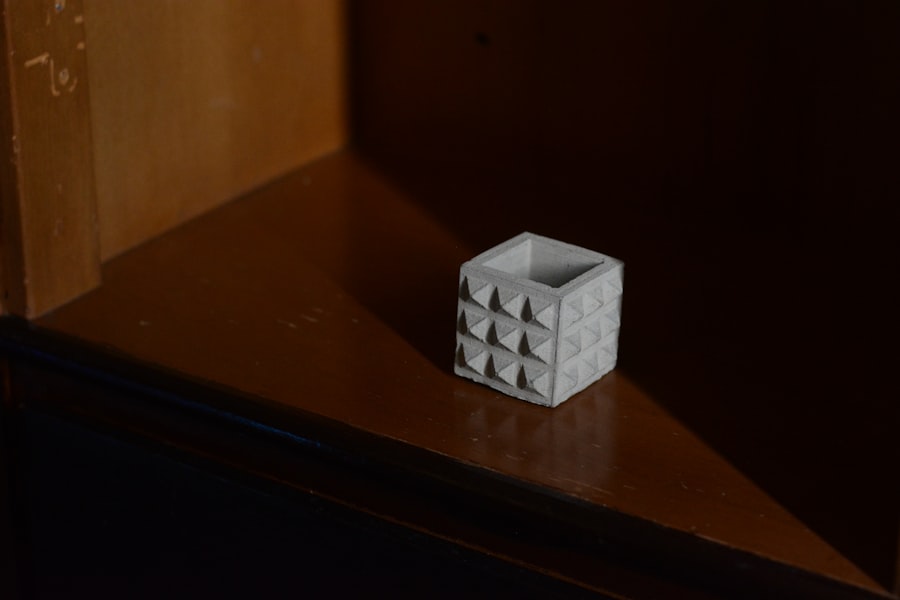As a WordPress enthusiast, I have always been fascinated by the flexibility and power of the platform. One of the most exciting developments in recent years has been the introduction of Advanced Custom Fields (ACF) Blocks. ACF Blocks allow me to create custom content blocks that can be easily integrated into the Gutenberg editor, enhancing the way I build and manage my WordPress sites.
This powerful combination of ACF and Gutenberg not only streamlines my workflow but also empowers me to deliver unique and tailored experiences for my clients and users. The ability to create custom blocks means that I can go beyond the standard offerings of WordPress. With ACF Blocks, I can design specific layouts and functionalities that cater to the unique needs of each project.
Whether I am building a portfolio site, an e-commerce platform, or a blog, ACF Blocks provide me with the tools to create visually appealing and highly functional content. In this article, I will delve into the intricacies of ACF Blocks, exploring how they work, how to customize them, and how to create them from scratch.
Key Takeaways
- ACF Blocks are a powerful feature of Advanced Custom Fields plugin that allows users to create custom blocks for the Gutenberg editor in WordPress.
- The Gutenberg editor is a block-based editor that allows for easy customization and organization of content on WordPress websites.
- Customizing ACF Blocks involves creating and designing custom fields to be used within the blocks, providing flexibility and control over the content.
- Creating ACF Blocks from scratch involves writing code to define the block’s attributes, rendering, and editing interface.
- Adding custom fields to ACF Blocks allows for the inclusion of additional data and content within the blocks, enhancing their functionality and versatility.
Understanding the Gutenberg Editor
To fully appreciate the capabilities of ACF Blocks, it is essential to understand the Gutenberg editor. Introduced in WordPress 5.0, Gutenberg revolutionized the way content is created and managed within WordPress. Gone are the days of relying solely on shortcodes and complex page builders; instead, Gutenberg offers a block-based approach that allows me to add, rearrange, and customize content with ease.
Each piece of content is treated as a block, whether it’s a paragraph, image, or video, making it incredibly intuitive to use. As I navigate through the Gutenberg editor, I find that its user-friendly interface significantly enhances my productivity. The drag-and-drop functionality allows me to experiment with different layouts effortlessly.
Additionally, the ability to preview changes in real-time means that I can see how my content will appear on the front end without having to switch back and forth between the editor and the preview mode. This seamless experience is further enriched by the integration of ACF Blocks, which allows me to add custom fields and functionalities directly within the Gutenberg interface.
Customizing ACF Blocks

One of the most appealing aspects of ACF Blocks is the level of customization they offer. When I create an ACF Block, I have complete control over its appearance and functionality. This means I can tailor each block to meet specific design requirements or user needs.
For instance, if I am building a testimonial block, I can customize it to include fields for client names, images, and quotes, ensuring that it aligns perfectly with the overall aesthetic of the site. The customization process begins with defining the block’s settings in ACF. I can specify various parameters such as block title, description, icon, and category.
This not only helps in organizing my blocks but also enhances the user experience when selecting blocks within the Gutenberg editor. Furthermore, I can define custom fields that will be displayed when users add the block to their content. This flexibility allows me to create highly interactive and engaging blocks that resonate with my audience.
Creating ACF Blocks from Scratch
Creating ACF Blocks from scratch may seem daunting at first, but I have found it to be a rewarding experience that significantly enhances my development skills. The process begins with registering a new block using PHP code in my theme’s functions.php file or a custom plugin. By utilizing the `acf_register_block_type()` function, I can define essential attributes such as name, title, render callback, and more.
Once I have registered my block, I can start adding custom fields using ACF’s intuitive interface. This step is crucial as it allows me to define what content users can input when they add my block to their posts or pages. For example, if I am creating a call-to-action block, I might include fields for a headline, button text, and URL.
After setting up these fields, I can then focus on styling and rendering my block in a way that aligns with my design vision.
Adding Custom Fields to ACF Blocks
Adding custom fields to ACF Blocks is where the real magic happens. With ACF’s powerful field types, I can create a wide range of input options for users. From text fields and image uploads to select dropdowns and color pickers, the possibilities are virtually endless.
This versatility allows me to craft blocks that are not only functional but also user-friendly. When adding custom fields, I pay close attention to how they will be presented in the Gutenberg editor. The goal is to create an intuitive interface that makes it easy for users to input their content without feeling overwhelmed.
For instance, if I am creating a pricing table block, I might include fields for item names, prices, and descriptions while ensuring that they are clearly labeled and organized within the editor. This thoughtful approach enhances usability and encourages users to engage with my custom blocks.
Styling and Designing ACF Blocks

Once my ACF Block is functional with custom fields in place, it’s time to focus on styling and design. The visual aspect of my blocks is crucial as it directly impacts user experience and engagement. To style my blocks effectively, I typically use CSS or SCSS files linked to my theme or plugin.
This allows me to maintain consistency across all blocks while ensuring they align with the overall design language of the site. In addition to traditional CSS styling, I also leverage inline styles within my block’s render callback function. This approach enables me to apply dynamic styles based on user input from custom fields.
For example, if a user selects a specific color for a button within my call-to-action block, I can apply that color dynamically using inline styles. This level of customization not only enhances aesthetics but also empowers users to create unique content that reflects their brand identity.
Testing and Troubleshooting ACF Blocks
After creating and styling my ACF Blocks, testing becomes an essential step in ensuring everything works as intended. I often begin by adding my blocks to various posts and pages within WordPress to see how they behave in different contexts. During this testing phase, I pay close attention to responsiveness across devices and browsers since a significant portion of users access websites on mobile devices.
If I encounter any issues during testing—such as fields not displaying correctly or styles not applying as expected—I dive into troubleshooting mode. Common problems often stem from conflicts with other plugins or themes, so I make sure to check for compatibility issues first. Additionally, reviewing error logs can provide valuable insights into any underlying issues that need addressing.
By systematically testing and troubleshooting my ACF Blocks, I ensure they function seamlessly for end-users.
Conclusion and Further Resources
In conclusion, working with ACF Blocks has transformed my approach to WordPress development. The combination of Advanced Custom Fields and the Gutenberg editor has empowered me to create highly customized content experiences that cater to diverse user needs. From understanding how Gutenberg operates to creating blocks from scratch and adding custom fields, each step has enriched my skill set and enhanced my ability to deliver exceptional websites.
For those looking to dive deeper into ACF Blocks, there are numerous resources available online. The official ACF documentation is an excellent starting point for understanding all available features and functionalities. Additionally, engaging with community forums or following tutorials on platforms like YouTube can provide practical insights into advanced techniques for creating and customizing blocks.
As I continue my journey with ACF Blocks, I am excited about the endless possibilities they offer for crafting unique digital experiences in WordPress.
